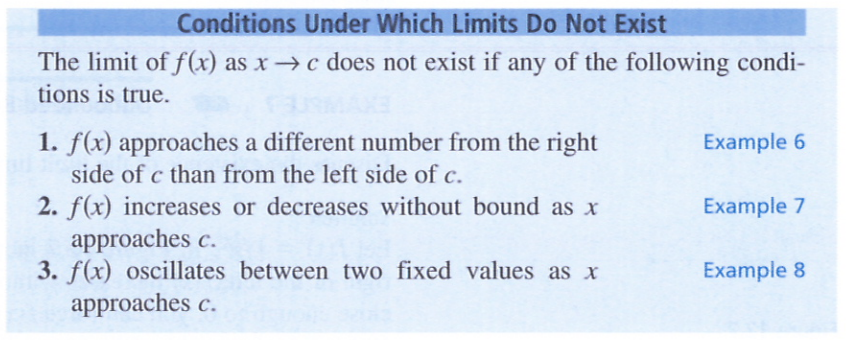I am going to use an example from our textbook to demonstrate how to find a limit using a table. The problem is asking us to evaluate the following limit:
First, notice that x is approaching 2. Therefore, we will plug in numbers very close to 2 in order to find the value of the limit. We can try numbers such as 1.99, 1.999, 2.01, 2.001, and so on.
3(1.99) – 2 = 3.97
3(1.999) – 2 = 3.997
3(2) – 2 = ?
3(2.01) – 2 = 4.03
3(2.001) – 2 = 4.003
From these calculations, it appears as though f(x) gets closer to 4 as x gets closer to 2. So, we can conclude that the limit is 4.
We could have also solved this specific problem by substituting the x in the equation with 2, the value which x is approaching:
3(2) – 2 = 6 – 2 = 4
Some limits also fail to exist. Here are the conditions under which a limit will not exist:
Finally, here are the properties of limits and operations that can be performed with limits:
All of these pictures can be found in section 12.1 of our textbook.





No comments:
Post a Comment